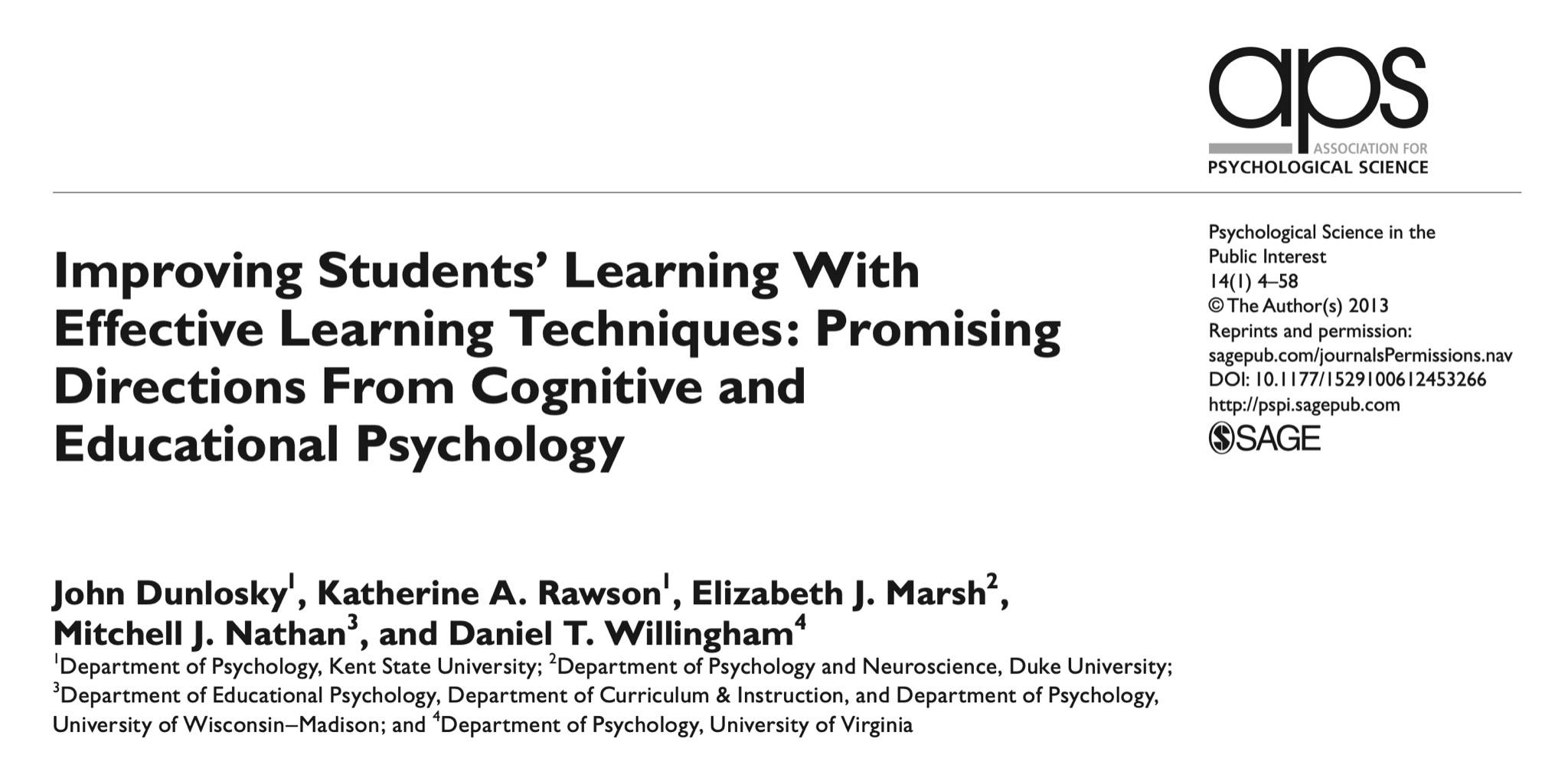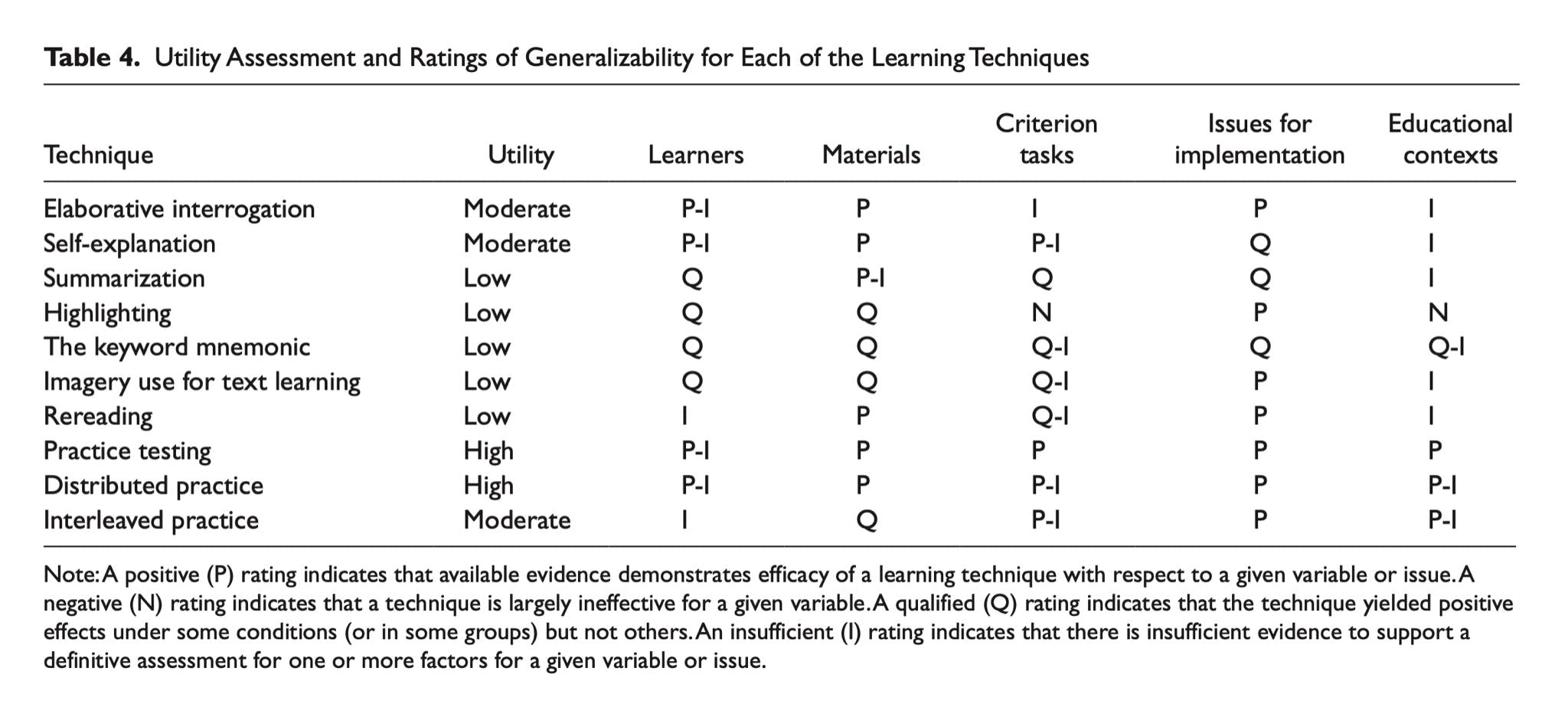Skip to content
Memory Science meets Data Science
How we transform knowledge into learning solutions?
Acads uses proven research from cognitive science and data science to create an optimal schedule to learn and review material—quantifying knowledge and providing the ability to measure what individuals know and what they don’t know.
In particular, a recent extensive review of the learning science literature [Dunlosky et al., 2013] examined the scientific evidence supporting ten different learning techniques, and assessed each one for potential effectiveness in the classroom. This review identified distributed learning and retrieval practice as the two most promising strategies for improving long-term learning.


Acads brings to you some of the most robust findings in learning science called SR & AR (Spaced Repetition & Active Recall Technique). These techniques enable the user to keep a track of their interactions with the material they are learning and adapt their review schedule to make it available again at the moment it is most beneficial for learning.


The system is constantly adapting and improving the learning experience for each user.
Spaced Repetition
SR & AR Intuitive Learning Techniques

Spaced Repetition, one of the most well-studied phenomena in understanding how humans learn, is the observation that spacing out learning across time improves long-term retention compared to studying the same material in a single session, even when total study time is the same.
For learners this is not intuitive, meaning there is considerable opportunity to improve outcomes by changing this behavior.
Thus, while going through Compact Acads Notes, learners must determine the optimal spacing between learning and reviews, in order to internalize the topics/ study material.
Active Recall
Active Recall is a retrieval practice, also known as the “testing effect” or “test-enhanced learning". This technique observes that actively attempting to recall previously studied material is more effective for long term retention than spending the same amount of time rereading or re-studying that same material. That is, rather than re-reading the relevant chapter, an individual would learn more spending their time attempting to answer practice questions on the subject.
This is also not intuitive: most people would naturally re-study the information they are trying to learn (for example by re-reading a crucial chapter of a book before an exam).


Hear What Data Speaks!
With & Without SR & AR
The important thing is not what your test score was last week, but what you know right now.
Studies reveal how memories fade and stabilize over time- The Forgetting Curve!


This chart, built from millions of interactions, shows how memory for new information fades over time - and how reviewing over timed intervals can help the knowledge to stick instead. The ability to remember newly learned material drops rapidly from 80% in the first couple of days, to below 40% after a few weeks.
Let's face it, simply studying something new doesn’t mean it sticks.
On the other hand, just completing a single review a few days after first studying something greatly enhances retention. An immediate 5% improvement in the first day or two grows to a 10% difference a few weeks later. And the time taken for completing 4 reviews per item drops exponentially, but builds a mastery of the material that results in 90% accuracy even weeks later.
The data is clear: incorporating AR & SR techniques, even just for the first few days, builds mastery for material that sticks around for weeks and months afterward.
Beyond the Platform:
The Final Sprint: Strategy
The Acads Platform does not just improve how individuals learn by delivering the most Compact & Scientific Study material. It also helps users become more proficient learners even outside the system, and drives significant improvements in their performance.
One way that it is delivered through, is via a combination of interactive predictive analytics and visual representations of knowledge and capability, specific to the user.
The Final Sprint: Strategy provides learners with a uniquely rich view of their own understanding of a subject in a quantitative manner. It also provides learners with a detailed view of how they are progressing with course material.
Visual dashboards such as Strategy Interface allow users to easily explore their review history, upcoming schedule, item difficulties and more. It helps to promote, within the learners, a sense of ownership and understanding of their progress and the strategy they have employed.


Want to print your doc?
This is not the way.
This is not the way.

Try clicking the ⋯ next to your doc name or using a keyboard shortcut (
CtrlP
) instead.